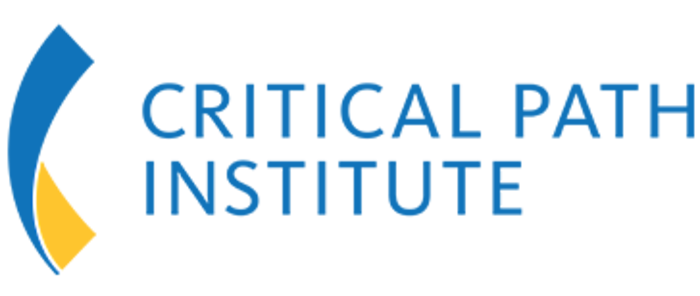Whether a melanoma patient will better respond to a single immunotherapy drug or two in combination depends on the abundance of certain white blood cells within their tumors, according to a new study conducted by UC San Francisco researchers joined by physicians from UCSF Health. The findings provide a novel predictive biomarker to identify patients who are most likely to respond well to a combination of immunotherapy drugs known as checkpoint inhibitors — and to protect those who won't respond from potentially adverse side effects of combination treatment.
"Combination immunotherapy is super-expensive and very toxic," said Adil Daud, MD, director of Melanoma Clinical Research at the UCSF Helen Diller Family Comprehensive Cancer Center and senior author of the new study. "You're putting patients at a lot of extra risk if they don't need it, and you can adjust for that risk by knowing in advance who can benefit."
The study, published online July 20, 2017 in Journal of Clinical Investigation Insight, describes an assay that measures the abundance of immune cells that infiltrate melanoma tumors. The findings revealed that patients who had lower levels of immune cells called T cells within their tumors benefitted most from two immunotherapy drugs in tandem. The measurements could provide clinicians with a means to predict patients who would most benefit from combination immunotherapy, the authors said.
"This is clinical research at its best," said UCSF's Katy Tsai, MD, a medical oncologist and lead author of the new report. "We have identified something as a predictive biomarker in melanoma, and we're hoping to validate it in other tumor types as well."
T cells are immune cells that patrol our body for signs of infection or other diseases, recognizing culprit cells via telltale proteins on their membranes. Our body's normal cells carry certain proteins on their coats that act as "checkpoints," making them invisible to T cells. But it turns out many cancer cells adopt the same trick — they cloak themselves with one of those same proteins, called PD-L1, causing T cells, which carry a complementary protein called PD-1, to mistake them as harmless. PD-L1 thus acts like a fake identification card, allowing cancer cells to live and multiply without being detected by the immune system.
Immunotherapy drugs called checkpoint inhibitors work to uncloak cancer cells by throwing a wrench in their disappearing act: these drugs block PD-L1 or PD-1, allowing T cells to recognize cancer cells as detrimental and kill them.
There are four FDA-approved checkpoint inhibitors: ipilimumab, nivolumab, pembrolizumab and atezolizumab. These drugs have been very successful in some cases, but they help only about 20 to 40 percent of patients. One of the ways doctors have improved their efficacy is by using multiple drugs at the same time. But the toxic side effects of these drugs can add up, and clinicians need to be able to correctly predict those who are most likely to respond to single drugs or combinations.
In a previous study, Daud and colleagues homed in on what makes some individuals respond well to checkpoint inhibitors that block PD-1, finding that patients whose tumors harbored high populations of T cells known as partially exhausted CD8+ cells responded well to treatment with nivolumab, an anti-PD-1 drug. Intriguingly, these cells had high levels of both PD-1 and CTLA-4, another well-known immune checkpoint protein, which is targeted by immunotherapy drugs such as ipilimumab.
In the new report, the researchers studied tumor samples from 102 melanoma patients, extracted T cells from the samples, and used cell sorting equipment to estimate the relative proportion of immune cells in the samples. The patients then underwent treatment either with only nivolumab, or with both nivolumab and ipilimumab. Finally, the researchers ran statistical tests to discover correlations among patient demographics, immune cell populations, and drug responses.
The team found that patients with high levels of exhausted T cells benefitted significantly from treatment with only a single drug. On the other hand, women and those who had liver metastases had lower number of immune cells patrolling their tumors, and responded well to the combination treatment.
"You're pushing on two different gas pedals – PD-1 and CTLA-4," said Daud, a member of UCSF's Parker Institute for Cancer Immunotherapy center. "If you're one of those patients with a low number of exhausted T cells, you have a better likelihood of benefitting from both drugs."
The team will next explore why women have fewer T cells — and in turn, a diminished response to single immunotherapy drugs — and whether these factors could be related to age, estrogen levels, or are related to pregnancy.
The cell-counting assay developed by the researchers is time- and resource-intensive, especially because it requires fresh tumor samples and elaborate cell-sorting machines, and it is only available at UCSF. To get around these limitations, the team is now working on a more broadly applicable test that would measure the levels of PD-1 and CTLA-4 proteins — both present on T cells — in tumors and use that as a surrogate marker for immune cell count.
"In six months to a year, we should have an assay that works using fairly common, less expensive techniques," said Daud. "And it could work on fresh, frozen or paraffin-embedded tumor blocks." With this easier test, the researchers hope to expand their study of immune cell infiltration to other cancer types and to bigger groups of patients, both from different areas of the U.S. and internationally.
###
In addition to Daud and Tsai, UCSF co-authors of the new study include Kimberly Loo, clinical research coordinator; Kelly Mahuron, MD, research fellow; Jacqueline Liu, melanoma clinical research coordinator; Mariela Pauli, associate specialist; Priscila Munoz Sandoval, assistant specialist; Adi Nosrati, MD, research associate; James Lee, MD, oncology fellow; Lawrence Chen, melanoma clinical research coordinator; Jimmy Hwang, PhD, senior biostatistician; Lauren S. Levine, MD, clinical fellow; Matthew Krummel, PhD, professor in the Department of Pathology; Alain Algazi, MD, clinical instructor in the Department of Medicine; Michael Alvarado, MD, assistant professor of surgery and Michael Rosenblum, MD, PhD, assistant professor of dermatology.
The research was supported by the National Institutes of Health, the Burroughs Wellcome Fund, the Kelly Family Fund, the Amoroso and Cook Fund and the Parker Institute for Cancer Immunotherapy.
About UCSF: UC San Francisco (UCSF) is a leading university dedicated to promoting health worldwide through advanced biomedical research, graduate-level education in the life sciences and health professions, and excellence in patient care. It includes top-ranked graduate schools of dentistry, medicine, nursing and pharmacy; a graduate division with nationally renowned programs in basic, biomedical, translational and population sciences; and a preeminent biomedical research enterprise. It also includes UCSF Health, which comprises top-ranked hospitals, UCSF Medical Center and UCSF Benioff Children's Hospitals in San Francisco and Oakland – and other partner and affiliated hospitals and healthcare providers throughout the Bay Area. Please visit http://www.ucsf.edu/news.
Follow UCSF
ucsf.edu | Facebook.com/ucsf | Twitter.com/ucsf | YouTube.com/ucsf
Media Contact
Devika Garg
[email protected]
650-704-7808
@ucsf
http://www.ucsf.edu
https://www.ucsf.edu/news/2017/07/407801/immune-cell-numbers-predict-response-combination-immunotherapy-melanoma





